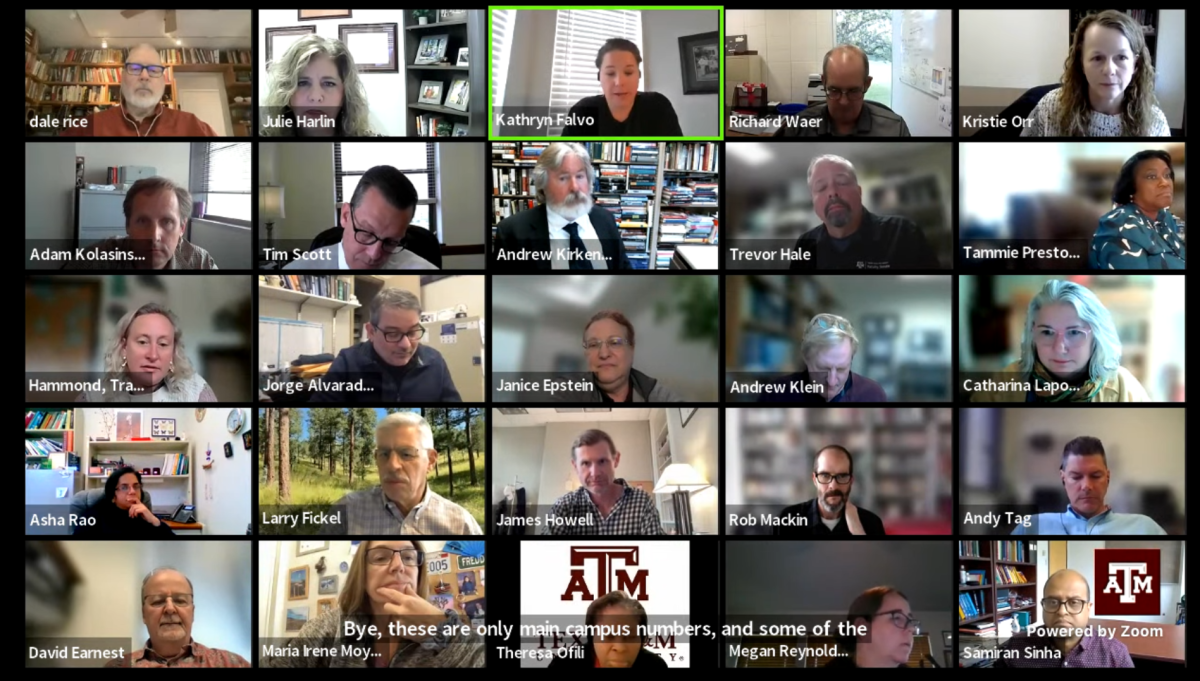The April 10 Texas A&M Faculty Senate meeting saw the discussion of open educational resources, or OER, an initiative that seeks to provide free textbooks and materials for students — a hot topic in the student senate this past semester.
Tim Scott, Ph.D., vice provost for student success, headed a committee to look into the current state of OER at A&M. Scott said the committee surveyed courses at A&M to evaluate its need.
“We surveyed 101 courses that represented over 1,700 sections,” Scott said. “The question really was, ‘Do you use OER? Are you interested in it? And do you have control over materials used in your course?’”
Scott said the committee found most instructors have the ability to decide which textbooks and other materials they use.
“We found that 71% of the instructors do have complete control over the materials they use,” Scott said. “Twenty-three percent don’t, and 6% have some say. The faculty are really in the driver’s seat [regarding implementing OER].”
The committee looked into why faculty were not adopting OER, Scott said.
“The biggest [barrier], 47% said, is ‘We don’t know what’s available,’” Scott said. “Thirty-five percent% said, ‘We need time to develop new materials.’ 21% said, ‘We’re not sure about the quality of [OER].’ We asked, ‘What would it take to get you interested?’ and 45% said funding.”
The committee’s recommendation from the study, Scott said, is funding development of OER first for large entry-level classes.
“What the committee suggested looking at is large enrollment, multi-section courses with expensive textbooks,” Scott said. “We’ll get more bang for the buck.”
Scott said the committee projected significant long-term return on investment after funding OER.
“With a $300,000 [investment], we felt like we could move the needle on four to five courses, impact 14,000 students, saving costs for students at $2.1 million a year,” Scott said. “You would have a five-year return on investment of about $10.6 million dollars a year.”
Daniel Collins, Ph.D., assistant instructional professor of chemistry, said the funding and timeline goals set by Scott were vastly insufficient and would lead to faculty burnout.
“The amount of funding, the timelines you guys are proposing, are very, very short,” Collins said. “To be open and honest with you, when you talk about half a million dollars … you’re going to need to throw three or four times that number to get it right. That half a million dollars is a drop in the bucket, and you’re going to have to ask for way, way more.”
Scott responded that one of the ways his office is looking to reduce the burden for faculty adopting OER is allowing them to continue using third-party paid homework platforms.
“If [departments] need to have students have access to a problem set that’s, let’s say, $30, that still meets the threshold for low cost for a student.” Scott said.
Angie Hill Price, Ph.D., professor of manufacturing and mechanical engineering technology, who also worked on the commission, said the goal of A&M’s OER initiative is both to lower course costs and to remove them.
“We primarily focused on not just no-cost, but also low-cost solutions,” Price said. “Of course, we focused on no-cost to begin with, because that’s the biggest impact for our students. The other part is the low-cost, using the size of the university to leverage negotiations we might make with people who provide codes … we need to do it with any textbooks, course support materials, things like that.”




















